Planting Site Basics
Planting Site: Phnom Penh Area
Country: Cambodia
Forest Type: Tropical Dry
Site Status: Active
Planting Partner: Model Teens of PUC, Pannasastra University of Cambodia and Luc Forsyth
Where Are We Planting?
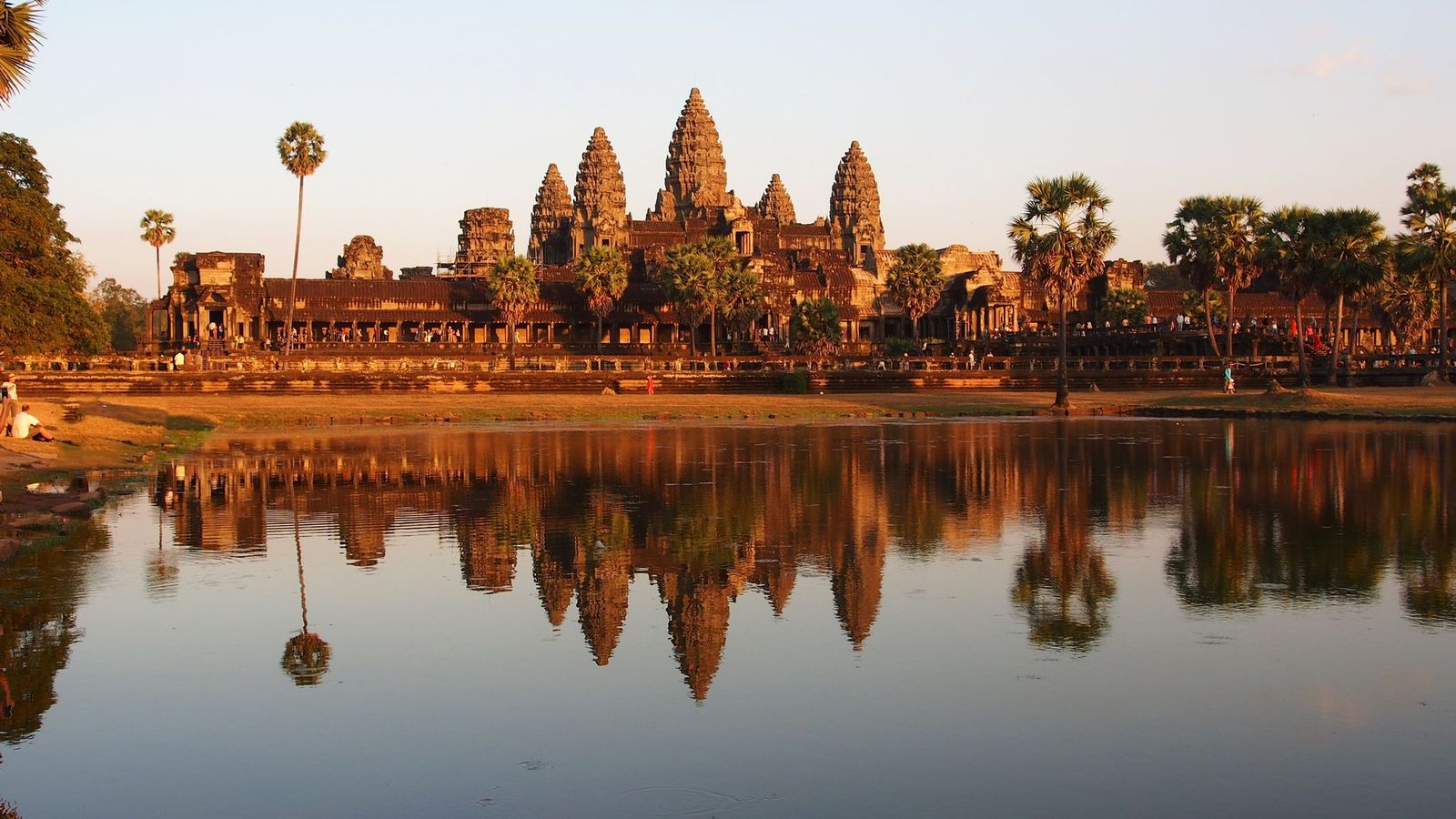
Cambodia lies in the heart of Southeast Asia, bordered by the Gulf of Thailand to the southwest and Vietnam to the east. The planting for this project took place on the grounds of temples and schools throughout Phnom Penh.
What Trees Are We Planting?
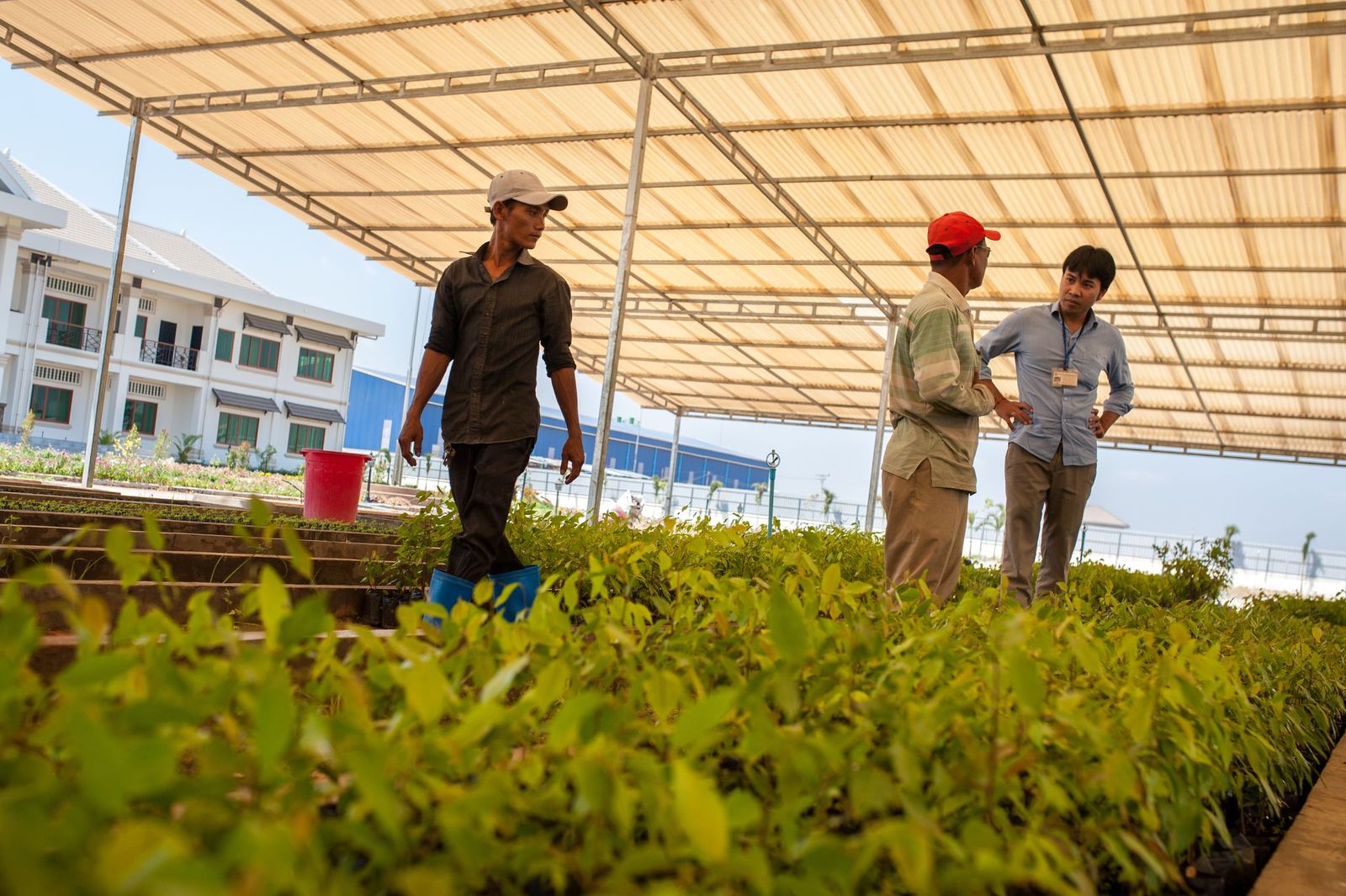
The trees planted across Phnom Penh are all native species of broadleaf trees. These included hardwood species that were lost to logging, fast-growing protective species to protect slower, more vulnerable trees, as well as highly valuable nearly extinct hardwood species. The intention at these sites was to replicate a native forest, not simply plant a monoculture. The species were chosen after consulting with local elders and sourced from local nurseries.
Here’s a little more info on the different native species we planted.
- Kro Nhoung is one of the most endangered species of tree in Cambodia. It has been logged nearly to extinction due to its high value and most Cambodians will never see one of these trees in nature during their lifetime. Its exceptional hardness makes the wood a highly sought-after material for building and furniture making.

- Beng trees are known nationwide for their wide-reaching branches, which provide shade from Cambodia’s scorching summer sun. Planted along roads and waterways, they provide a barrier against wind and water-driven soil erosion.
- Kor Ki trees, with their distinctive height and stature, have long been sought after as a source of high-quality lumber and are used in the construction of traditional Khmer homes.
- Chres trees grow much faster than most Cambodian hardwoods, and the edible leaves are a staple ingredient in Ka Ko, a traditional Khmer soup.
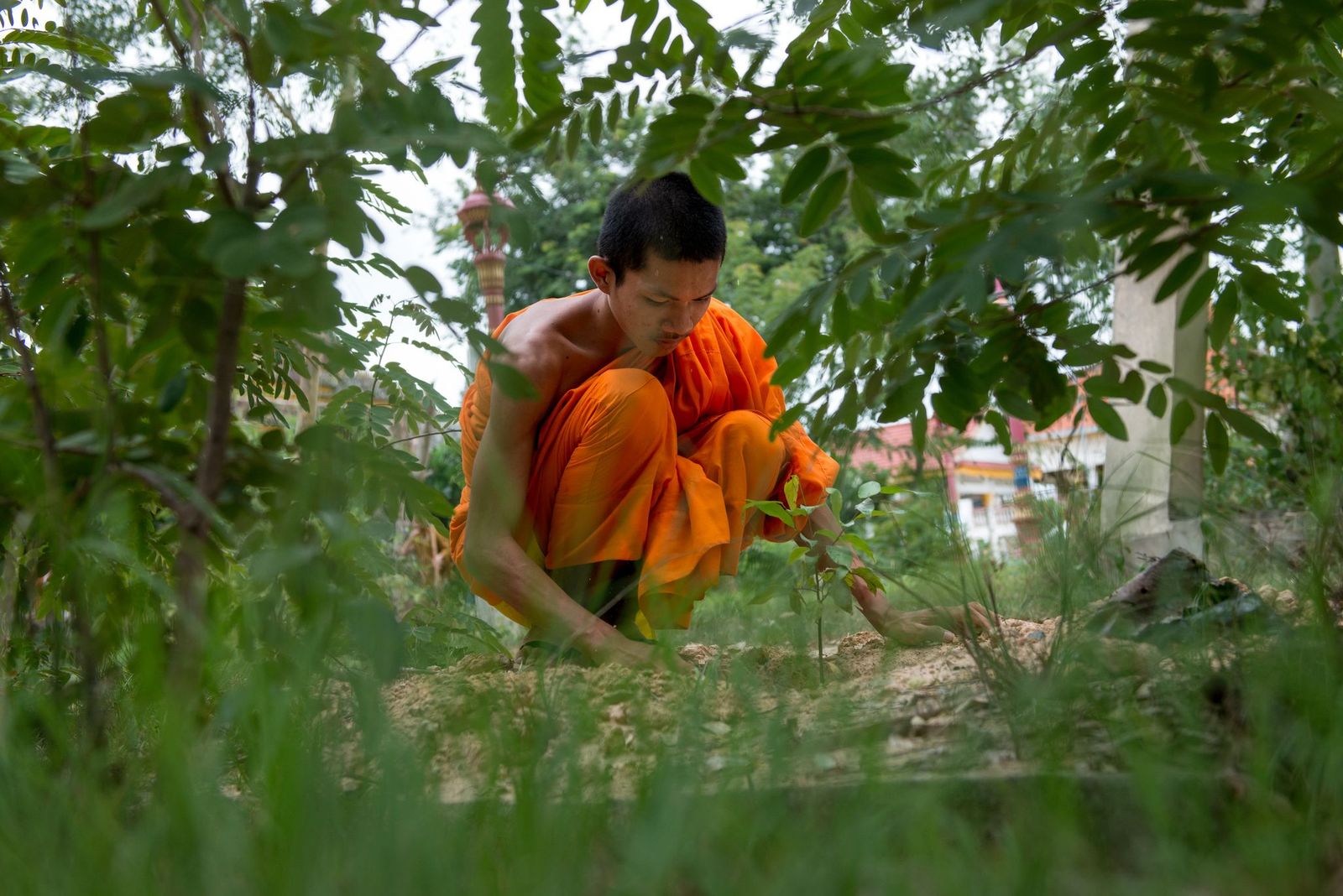
- According to legend, one of Buddha’s incarnations was born under a Raing Phnom, meaning these rare trees share a strong connection to Cambodia’s Buddhist culture. They are most often seen near Buddhist pagodas and shrines, and its leaves can be boiled in a natural maternity tea, used to ease the pain of childbirth.
- The final species planted are Mai Sak trees which are a very fast growing softwood species. They are excellent producers of oxygen and provide protection for slower-growing hardwoods.
Why Plant Tropical Dry Forests In Cambodia?
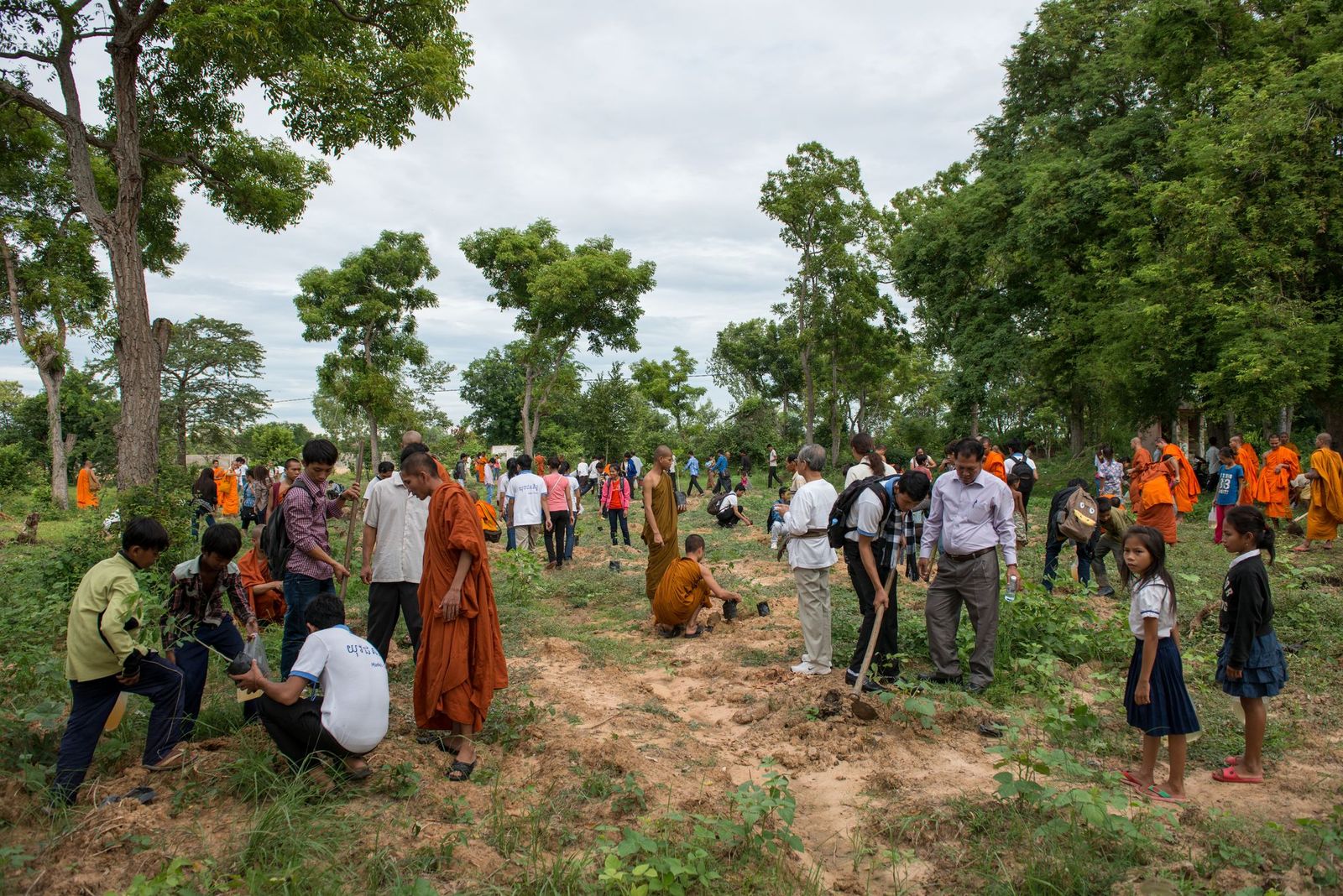
Cambodia has had a storied past that’s both heartbreaking and inspiring. The country, which has gone through six name changes since gaining its independence in 1953, has been left to recover the identity it nearly lost a few decades ago. Hidden somewhere beneath years of genocide and foreign occupation, the spirit of Cambodia has proven completely and utterly resilient. Understandably, however, Cambodia and the Khmer people did not escape these horrors unscathed.
The Khmer Rouge who ruled for 10 years under Pol Pot carried out a mass genocide until it was finally dissolved in 1999. While the current government is no longer committing atrocities like those carried out under the Khmer Rouge regime, the current single political party ruled by Hun Sen has been in power for 35 years. There is significant repression through government crackdowns targeting independent media, outspoken civil society organizations, and political opposition.
While the state of Cambodia is much more liveable now than during the Khmer Rouge regime, it is still riddled with corruption as the country continues to heal from mass genocide and near cultural annihilation. According to Transparency International in 2020, Cambodia ranked 160 out of 180 on the Corruption Perception index with a corruption score of 21/100; meaning that it lies in the top quarter of the world’s most corrupt countries.
When corruption is such a major force in governance, money becomes the main priority of the government which frequently means that environmental conditions suffer. In 2018 it was reported that Cambodia had lost 26% of its forests since 1975. Or a 28% decrease in tree cover from 2001 to 2020. Widespread logging, both illegal and government-sanctioned, is rapidly destroying forests throughout the country.
Who’s Planting With Us?

This project was conceptualized and led by photojournalist Luc Forsyth who partnered with the Model Teens of Pannasastra University of Cambodia, a local activist group. One notable difference between this project and others we’ve carried out is that we are mobilizing the country’s youth. By having university student volunteers and monks plant these trees, tentree is helping to empower Cambodians. Rather than supplying short term jobs, this is real development – motivated youth trying to work around a corrupt government and push back by taking action on issues they believe are important.
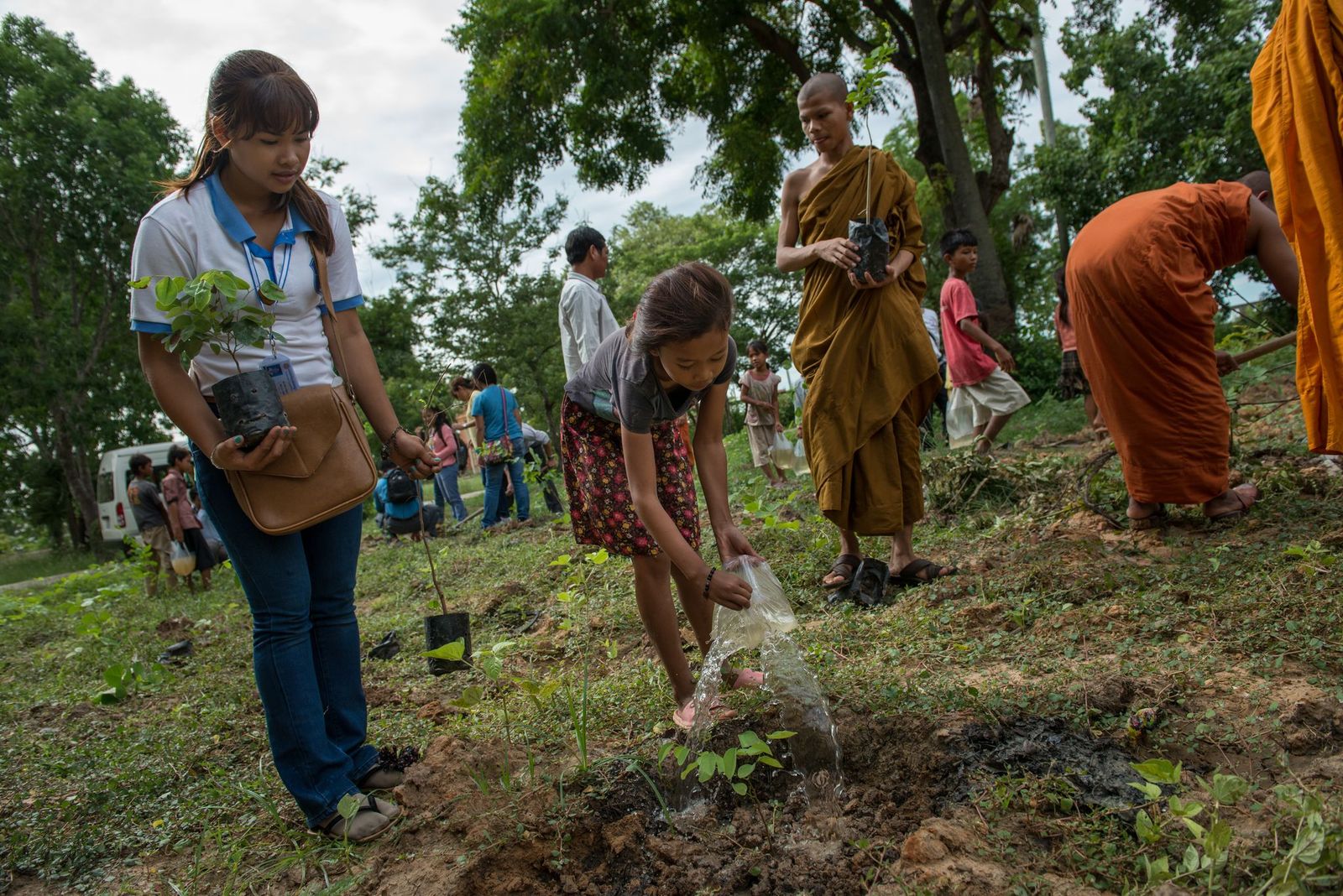
The planting was part of a 6 week training program, teaching students the importance of trees, how to plant, and how to protect them. Education is a critical piece in ensuring long term success of projects. By planting in Cambodia with volunteers, citizens have the chance to help their own country turn over a new leaf. Due to governmental restrictions, the scale of the planting for this project was small. Buddhist monks and politically active youth committed to planting and taking care of native trees on their temple grounds and near their schools across the country. These trees will be blessed by the monks, who hold the environment to be sacred and spiritual, and will stand as a reminder for all Cambodians that there is always new life and growth. This project can help serve as an outlet for change and political expression, helping the Khmer people reinvent Cambodia to become the country they want and need it to be.
What’s The Impact?
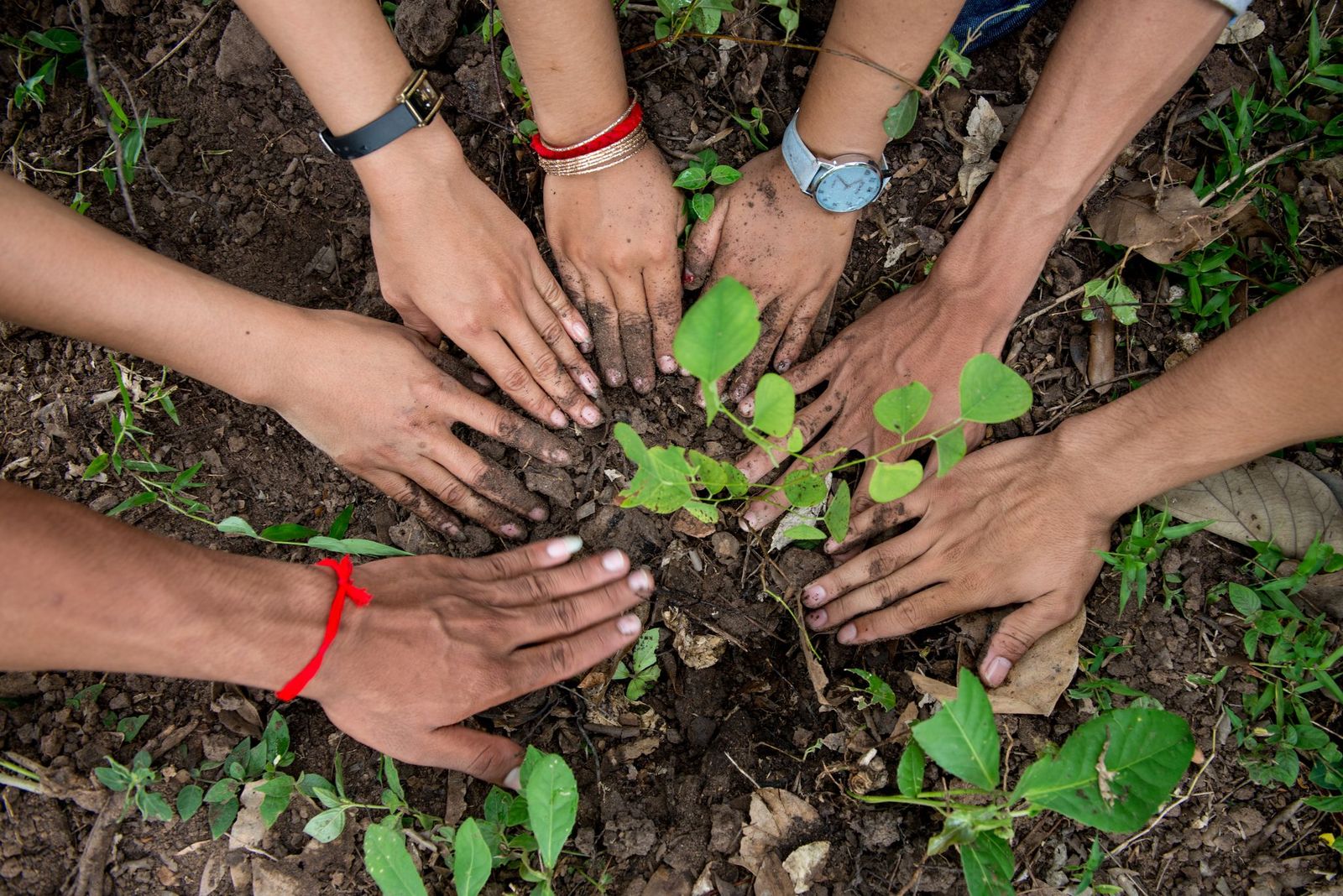
Environmental:
- Provide stability to the land and protect against erosion.
- Protect biodiversity by restoring local endangered species.
- Provide shade and climate moderation in urban environments.
- Sequester carbon to help combat climate change.
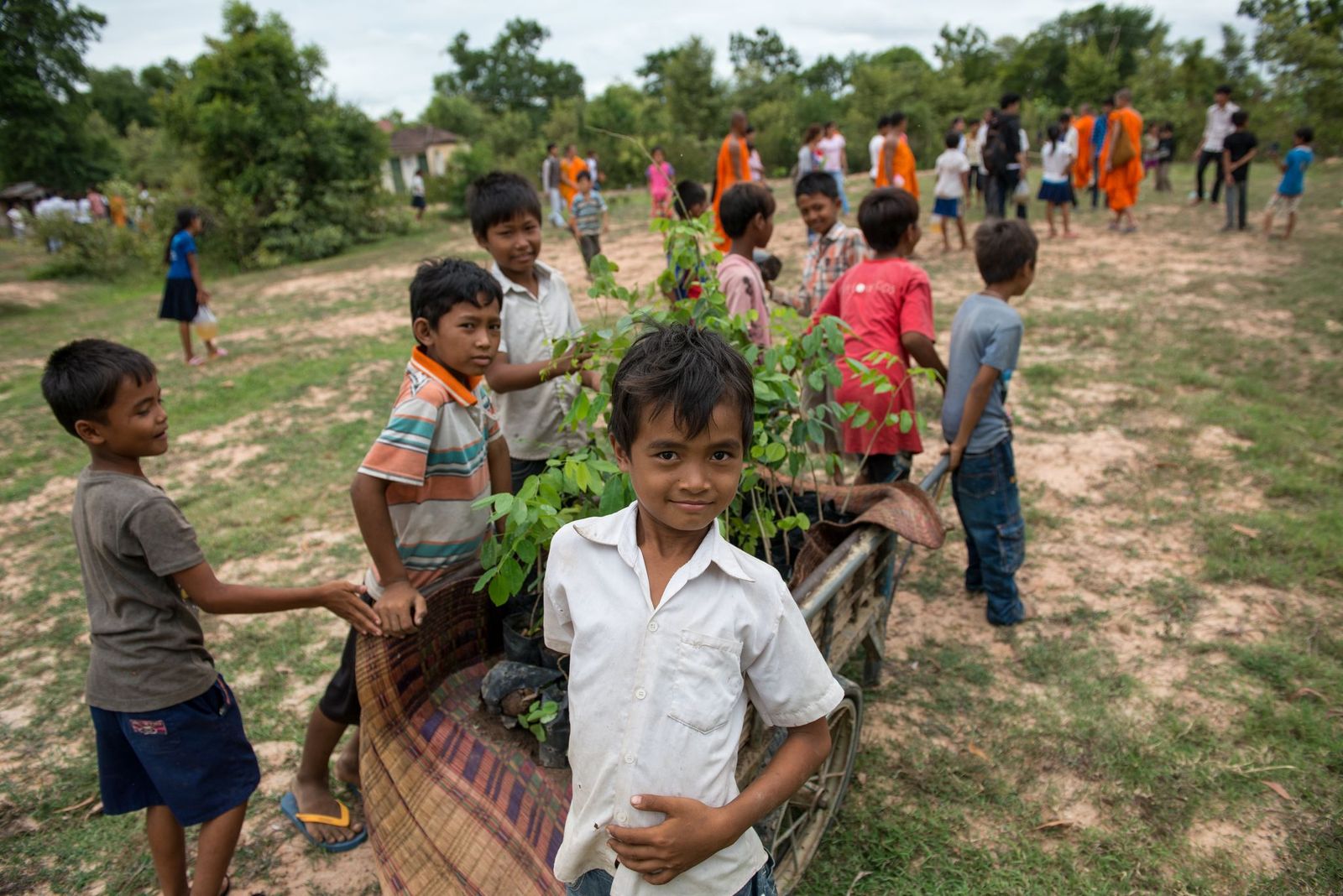
Social:
- Empower the local community in the reforestation of community spaces.
- Empower local communities to become advocates for change and engage in forms of peaceful opposition to government.
- Provide education on the importance of trees and environmental stewardship.
Related UN Sustainable Development Goals (SDGs)
The UN’s Sustainable Development Goals (SDGs) are a collection of 17 interlinked global goals that are a “blueprint to achieve a better and more sustainable future for all.”
Here are the SDGs that we’re addressing in our Cambodia Site:
#3 Good Health and Well-being: Ensure healthy lives and promote well-being for all at all ages.
#4 Quality Education: Ensure inclusive and equitable quality education and promote lifelong learning opportunities for all.
#10 Reduced Inequalities: Reduce inequality within and among countries.
#11 Sustainable Cities and Communities: Make cities and human settlements inclusive, safe, resilient and sustainable.
# 13 Climate Action: Take urgent action to combat climate change and its impacts by regulating emissions and promoting developments in renewable energy.
#15 Life on Land: Protect, restore and promote sustainable use of terrestrial ecosystems, sustainably manage forests, combat desertification, and halt and reverse land degradation and halt biodiversity loss.
#16 Peace Justice and Strong Institutions: Promote peaceful and inclusive societies for sustainable development, provide access to justice for all and build effective, accountable and inclusive institutions at all levels.
Want to see where your trees are planted? Register your trees now.

